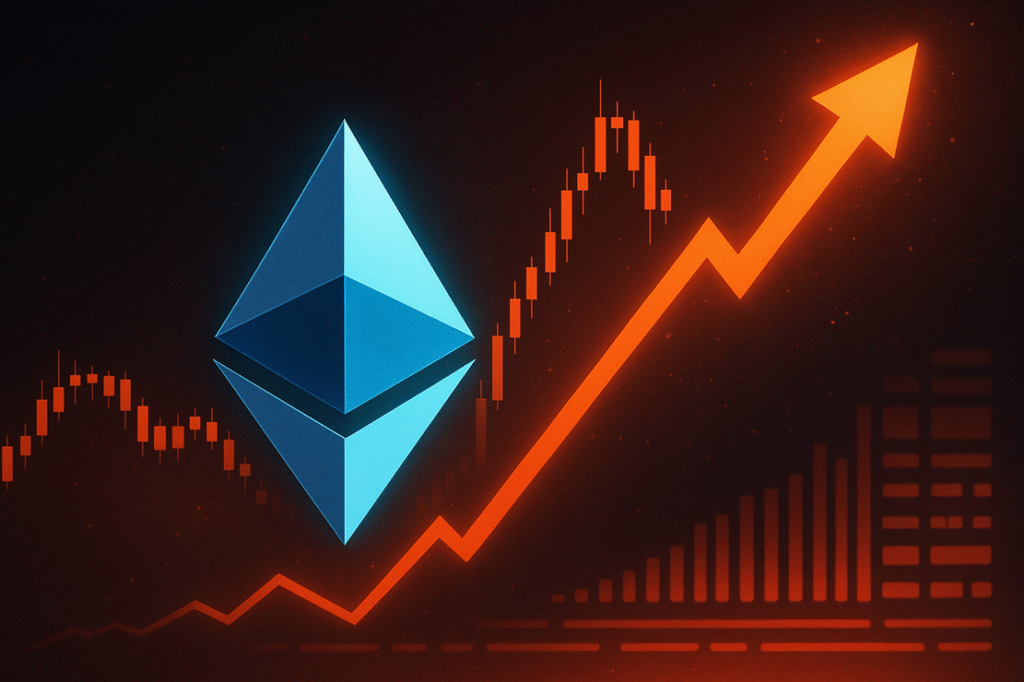In the rapidly evolving landscape of digital finance, Ethereum (ETH) stands out as a formidable player poised to redefine the cryptocurrency market. As blockchain technology ushers in a new era, Ethereum’s potential to become a cornerstone of decentralized finance is capturing widespread attention. This in-depth analysis delves into why some experts believe Ethereum could rival traditional assets like crude oil, gold, and global bonds in its economic impact and value.
The Bull Case for Ethereum: A Visionary Outlook to $706,000
Understanding Ethereum’s Unique Value Proposition
Ethereum’s allure lies in its positioning as “digital oil,” underpinning and securing an emergent blockchain economy. In a comprehensive research report, industry leaders including Danny Ryan and Ryan Sean Adams posit that Ethereum could achieve a market capitalization of approximately $85 trillion—a valuation approaching $706,000 per coin. This comparison aligns Ethereum’s worth with major global assets: crude oil, gold, the bond market, and broad money supply. The integration of Ethereum into institutional portfolios further reinforces its potential as a primary reserve asset.
Ethereum’s appeal as a foundational layer for digital assets is evident in its robust developer ecosystem, known for its reliability and zero downtime. Despite technical advancements and a firm grasp on tokenized assets, Ethereum is still perceived as undervalued compared to its all-time highs. This perceived undervaluation is juxtaposed against Ethereum’s growing dominance, signaling a potentially transformative investment landscape.
The Mechanics Behind Ethereum’s Projected Valuation
A key aspect of Ethereum’s projected growth lies in its monetary design. Ethereum’s gross issuance caps at 1.51% annually, with about 80% of transaction fees being burned. This mechanism drives net issuance towards deflation as blockchain activity increases. Since Ethereum’s transition to proof-of-stake (PoS) in September 2022, supply growth has maintained a rate of 0.09%, lower than traditional fiat and even Bitcoin. This introduces a concept of “predictable scarcity,” differentiating Ethereum’s approach from Bitcoin’s capped supply model.
In Ethereum’s PoS system, validators earn by securing the network, akin to yield generation from lending gold or leasing oil reserves. Notably, Ethereum’s yield is programmable and compounding, enhancing its attractiveness as a digital commodity. Currently, 32.6% of Ethereum is utilized as collateral in decentralized finance (DeFi) and enterprise settings, with an additional 3.5% on alternate blockchains. As tokenized real-world assets expand, Ethereum is primed to become an essential, censorship-resistant reserve asset, devoid of counterparty risks.
Medium and Long-term Milestones for Ethereum
While the ultimate vision projects Ethereum’s value in the six figures, the study identifies interim benchmarks: a short-term target of $8,000 equating to a market cap of roughly $1 trillion, and a medium-term valuation of $80,000 with a $10 trillion market cap. Key drivers include accelerated tokenization of real-world assets, institutional interest in native staking yields, and strategic accumulation of Ethereum reserves, evidenced by nearly $2 billion in disclosed holdings.
The report emphasizes that Ethereum’s unique properties—neutrality, yield, and programmability—differentiate it as a reserve asset capable of securing the global tokenized financial system. Although the current market price is seen as a transient mispricing, it underscores Ethereum’s complex valuation compared to Bitcoin’s straightforward digital gold analogy.
FAQs on Ethereum’s Investment Potential
How does Ethereum compare to Bitcoin as a digital asset?
Unlike Bitcoin, which is limited to being a digital gold, Ethereum offers multipronged utility as a fuel, store of value, collateral, and yield generator. Its programmability and deflationary mechanics further enhance its long-term potential.
What factors contribute to Ethereum’s projected valuation?
Ethereum’s potential lies in its foundational role in blockchain economics, its deflationary issuance model post-PoS merge, and its programmable yield. Its comparison with major global assets underscores its transformative potential.
Is Ethereum a viable long-term investment?
Ethereum shows promise due to its scalable technology and central role in decentralized finance. However, investments should be guided by comprehensive market analysis and emerging developments within the blockchain ecosystem.
What are the risks associated with investing in Ethereum?
The primary risks include technological challenges, regulatory changes, and market volatility. Potential investors should consider these factors alongside Ethereum’s growth potential and market adoption trends.
In summary, Ethereum’s multidimensional role within the digital economy places it at the forefront of potential blockchain-based financial systems. As the financial world increasingly digitizes, Ethereum’s unique attributes offer a compelling reason for its inclusion as a critical component of institutional portfolios.

